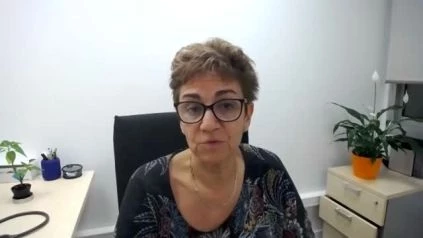Anna Sureda, MD, Ph.D. of the Blood Cell Barcelona speaks about the ASH 2020 abstract – 2973 Brentuximab Vedotin with Chemotherapy for Patients with Previously Untreated, Stage III/IV Classical Hodgkin Lymphoma: 5-Year Update of the ECHELON-1 Study.
Introducing
Historically, almost all classical Hodgkin lymphoma (cHL) relapses occur during the first 5 years (Radford et al, BMJ 1997). In phase 3 ECHELON-1 trial (NCT01712490), treatment with brentuximab vedotin, doxorubicin, vinblastine, and dacarbazine (A+AVD) significantly improved modified progression-free survival (PFS) compared to doxorubicin, bleomycin, vinblastine, and dacarbazine (ABVD) in patients (pts) with newly diagnosed Stage III/IV cHL (Connors et al, NEJM 2018). In the intent-to-treat (ITT) population, which was consistent across most main pt subgroups, regardless of the status of the interim positron emission tomography (PET) scan, disease level, and baseline disease risk factor score, 3- and 4-year follow-up (Straus et al, Blood 2020; Bartlett et al, Blood 2019) recorded durable PFS gain with A+AVD vs ABVD. After a median follow-up of 55.6 months, we announce revised efficacy and safety outcomes for pts in the ECHELON-1 trial.
Methodology
An exploratory study of PFS (time from randomization to relapse, progression, or death from any cause) per investigator (INV) was performed in this longer follow-up assessment, with a cutoff date of May 18, 2020. To obtain up to six cycles of A+AVD (n=664) or ABVD (n=670) intravenously on days 1 and 15 of the 28-day period, pts with previously untreated Stage III or IV cHL were randomized to 1:1. An interim PET scan after cycle 2 (PET2) was required. During the extended follow-up period, resolution and progress (defined as improvement by ⇠1 grade from the worst grade as of the latest assessment) of peripheral neuropathy (PN) in pts with continuing symptoms at the end of treatment (EoT) was monitored. It also examined the prevalence of secondary malignancies and the occurrence and outcomes of pregnancies among pts and their partners.
Outcomes
The approximate 5-year PFS rates with extended follow-up (median 55.6 months; 95 percent CI 55.2-56.7) were 82.0 percent (95 percent CI 78.7-84.8) for A+AVD and 75.2 percent (95 percent CI 71.5-78.4) for ABVD. Overall, A+AVD over ABVD was preferred by PFS per INV (HR 0.691; 95 percent CI 0.543–0.880; p=0003) (Table). PET2 status and age exploratory subgroup analysis showed PFS benefits irrespective of PET2 status (Table); A+AVD vs. ABVD median 5-year PFS per INV in the ITT population was 84.7 percent vs. 78.8 percent in PET2-negative pts (HR 0.676; 95 percent CI 0.512–0.892; p=0.005) and 60.6 percent vs. 45.9 percent in PET2-positive pts (HR 0.703; 95 percent CI 0.393–1.256; p=0.230). The advantage of PFS with A+AVD over ABVD was also independent of the number of risk factors from the International Prognostic Factors Project (IPFP) (Figure). 84 percent (370/442) and 86 percent (245/286) of pts with treatment-emergent PN reported full resolution or improvement of symptoms in the A+AVD and ABVD arms, respectively, after a median follow-up of nearly 5 years. The median period for full resolution of ongoing EoT PN events was 30 weeks (range 0-262) in the A+AVD arm and 16 weeks (range 0-267) in the ABVD arm; the median time for change was 49 weeks (range 8-270) and 12 weeks (range 2-70). Of the 132 (30 percent) pts in the A+AVD arm with continuing PN, 77 (17 percent), 39 (9 percent), 15 (3 percent), and 1 (<1 percent) witnessed maximum grade 1, 2, 3, or 4 severity, respectively. PN was continuous at 61 pts (21 percent) in the ABVD arm; overall intensity was grade 1, 2, 3, or 4 at 40 (14 percent), 17 (6 percent), 4 (1 percent), and 0 pts, respectively. A total of 124 pregnancies (40 female and 30 male pts in the A+AVD arm; 26 female and 28 male pts in the ABVD arm) were recorded among the pts and their partners. The proportion of live births was comparable between arms for female pts (26/40 in the A+AVD arm and 17/26 in the ABVD arm, 65 percent in each arm) and for male pts’ partners (19/30 [63 percent] in the A+AVD arm and 20/28 [71 percent] in the ABVD arm). There were no stillbirths registered. Additional follow-up will be provided at an average median of ~5 years and secondary data on malignancy.
Findings
A+AVD continues to show a robust and enduring treatment advantage independent of disease level, risk factor score, and PET2 status after a median follow-up of 55.6 months. In addition, treatment adaptation to interim PET2 status is not needed in comparison with ABVD, and exposure to bleomycin is avoided. The sustained advantage of PFS with A+AVD is combined with a manageable safety profile in both treatment arms, with symptoms of PN improving or resolving with time and comparable pregnancy rates. The advantages observed with A+AVD at this significant milestone indicate that A+AVD is an attractive treatment choice for all pts with Stage III or IV cHL previously untreated.

